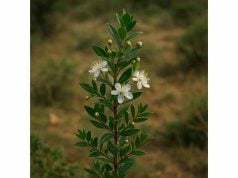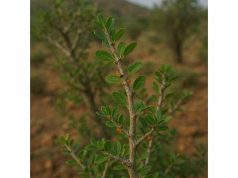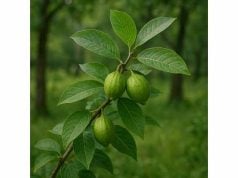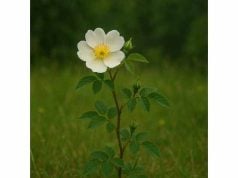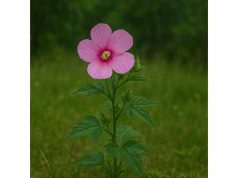
Mahleb is an ancient spice derived from the seeds of the St. Lucie cherry (Prunus mahaleb), prized for its aromatic, slightly bitter, and nutty flavor. This unique spice is renowned for its potential digestive aid, antioxidant and anti-inflammatory properties, and its role in traditional medicinal practices. Rich in active compounds such as coumarins, benzaldehyde, and flavonoids, Mahleb has been utilized to support respiratory and gastrointestinal health. Widely used in culinary traditions across the Mediterranean and the Middle East, this versatile ingredient also holds promise in natural therapeutic applications, making it a valued addition to both food and herbal medicine.
Table of Contents
- Herbal Overview and Identification
- Chemical Composition and Vital Compounds
- Therapeutic Benefits and Fundamental Attributes
- Usage Guidelines and Precautionary Measures
- Scientific Evaluations and Noteworthy Findings
- Common Inquiries and Quick Answers
Herbal Overview and Identification
Mahleb, scientifically recognized as Prunus mahaleb, is a member of the Rosaceae family and is cultivated primarily for the aromatic seeds found within its small, ornamental cherry fruit. This deciduous tree, which can grow to modest heights, is native to regions spanning the Mediterranean basin, parts of Eastern Europe, and the Middle East. The tree produces clusters of small, white to pale pink blossoms in the spring, which eventually give way to tiny, dark fruits. Within these fruits lies the prized seed, commonly known as Mahleb, which is harvested, dried, and ground to create a distinctive spice.
Historically, Mahleb has been used for centuries not only as a culinary ingredient but also as a medicinal aid in traditional healing practices. The spice’s flavor is reminiscent of a blend of bitter almond and cherry, offering a complex taste profile that enhances baked goods, desserts, and savory dishes alike. In several cultures, Mahleb is revered for its purported ability to stimulate digestion, relieve flatulence, and improve overall gastrointestinal function. Its inclusion in traditional recipes is often associated with celebrations and festive occasions, where its unique aroma is believed to uplift the spirit and enhance the flavor of time-honored dishes.
The physical characteristics of the Prunus mahaleb tree are both charming and functional. Its leaves are simple, ovate, and finely serrated, contributing to a delicate canopy that provides partial shade in orchards and gardens. The bark, with its smooth yet slightly fissured texture, and the compact form of the tree make it an attractive ornamental addition to rural landscapes. Notably, the fruits are small and globular, encapsulating the aromatic seeds that have captured the interest of herbalists and culinary experts alike.
Cultivation of Mahleb requires a balance of well-drained soil, ample sunlight, and moderate water availability. The tree thrives in temperate climates, and its resilience to a range of environmental conditions has allowed it to spread widely beyond its native regions. Gardeners and small-scale farmers value Mahleb not only for its culinary and medicinal applications but also for its ornamental beauty, which adds a rustic charm to traditional orchards.
In addition to its botanical attributes, the cultural significance of Mahleb is profound. In many Mediterranean and Middle Eastern communities, the spice is steeped in ritual and tradition. It is often included in recipes passed down through generations, serving as a symbol of heritage and culinary artistry. Local folklore attributes mystical properties to Mahleb, suggesting that its aroma can ward off negative energies and promote good health. Such beliefs have further cemented its place in both the kitchen and the apothecary.
Modern botanical studies continue to explore the diversity of compounds present in Mahleb, revealing a complex interplay between its genetic makeup and the environmental factors that influence its growth. The tree’s adaptability and the resulting variability in its seed composition have made it a subject of interest in agronomy and phytochemistry. This dynamic botanical profile not only underscores Mahleb’s versatility but also points to its potential as a sustainable source of natural compounds for future research and commercial applications.
The identification and proper classification of Mahleb are critical for ensuring quality and authenticity, especially as demand for natural spices and herbal remedies grows globally. Accurate botanical characterization helps distinguish Mahleb from similar species, preventing adulteration and preserving its unique properties. With an ever-growing interest in natural health products, Mahleb stands out as a prime example of a traditional spice with modern relevance, bridging the gap between culinary arts and herbal medicine.
In summary, the botanical profile and identification of Mahleb reveal a rich tapestry of cultural heritage, scientific interest, and culinary tradition. Its distinctive flavor and diverse uses have allowed it to endure through centuries, continuing to enrich both our tables and our health practices. The synthesis of historical knowledge and modern research ensures that Mahleb remains a valued resource in both gastronomy and natural medicine, offering benefits that extend well beyond its appealing aroma.
Chemical Composition and Vital Compounds
Mahleb’s efficacy as a spice and a medicinal ingredient is deeply rooted in its intricate chemical composition. The seeds contain a host of bioactive compounds that contribute not only to its distinctive flavor but also to its therapeutic properties. Detailed phytochemical analysis has revealed a complex matrix of volatile oils, coumarins, flavonoids, and other organic compounds that work synergistically to deliver multiple health benefits.
- Coumarins
One of the primary constituents in Mahleb is coumarin, a fragrant compound known for its sweet, vanilla-like aroma. Coumarins are widely studied for their antioxidant and anti-inflammatory properties. In Mahleb, coumarins contribute to its overall aromatic profile while also playing a role in modulating oxidative stress within the body. Research suggests that these compounds may help in preventing cellular damage and reducing inflammation in various tissues. - Benzaldehyde
Benzaldehyde is another significant compound found in Mahleb. It is largely responsible for the spice’s characteristic bitter-almond flavor. This aromatic aldehyde is known to possess antimicrobial properties, making it a natural preservative. Additionally, benzaldehyde has been associated with digestive benefits, potentially aiding in the stimulation of gastric secretions and improving overall digestive efficiency. - Flavonoids
Flavonoids present in Mahleb, including a variety of phenolic compounds, are key contributors to its antioxidant capacity. These compounds help neutralize free radicals and reduce oxidative stress, which is a major factor in aging and chronic disease development. The presence of flavonoids also supports cardiovascular health by improving blood vessel function and reducing inflammation in the circulatory system. - Volatile Oils
The essential volatile oils extracted from Mahleb seeds are responsible for the spice’s rich aroma and complex flavor profile. These oils contain a mix of terpenoids and other organic molecules that exhibit both antimicrobial and anti-inflammatory properties. The volatile oils are particularly valued in culinary applications, where they impart a distinctive taste and fragrance to baked goods and desserts. - Tannins
Tannins are naturally occurring polyphenolic compounds that contribute to Mahleb’s slightly astringent quality. While they can impart a bitter taste, tannins also offer several health benefits. They are known to have antimicrobial properties and can aid in wound healing by promoting tissue contraction and reducing inflammation. Additionally, tannins may help regulate digestive processes and improve gut health. - Lignan Compounds
Emerging research has identified lignan compounds within Mahleb that exhibit potential anti-cancer properties. These compounds are thought to interfere with the proliferation of malignant cells by modulating key cellular signaling pathways. Although further studies are necessary to fully elucidate their mechanisms, the presence of lignans adds another dimension to Mahleb’s therapeutic potential. - Other Minor Constituents
In addition to the major compounds listed above, Mahleb contains several other minor constituents such as small amounts of saponins, sterols, and additional phenolic compounds. These minor components, though present in lower concentrations, contribute to the overall synergistic effect of the spice. They enhance bioavailability and may improve the absorption of the key active ingredients, thus maximizing Mahleb’s health benefits.
The diverse chemical composition of Mahleb is what gives this spice its multifaceted applications. Each compound, whether it is the bold flavor of benzaldehyde or the potent antioxidant activity of flavonoids, plays a specific role in promoting health and enhancing culinary experiences. The interplay between these components not only provides robust therapeutic effects but also underscores the importance of using the whole spice to maintain a balanced and natural efficacy.
Advanced analytical techniques, such as gas chromatography-mass spectrometry (GC-MS) and high-performance liquid chromatography (HPLC), have been instrumental in decoding the phytochemical profile of Mahleb. These studies have confirmed the presence and relative abundance of each bioactive compound, paving the way for standardized extraction methods that ensure consistent quality in both culinary and medicinal products. Such precision in characterization is essential for validating traditional uses and integrating Mahleb into modern health practices.
Furthermore, the variability in chemical composition can be influenced by factors such as soil quality, climate, and cultivation practices. This natural variability means that the potency and flavor profile of Mahleb may differ slightly from one region to another. As a result, sourcing and quality control become paramount for consumers and manufacturers alike. Standardized extracts and controlled cultivation practices help mitigate these variations, ensuring that each batch of Mahleb delivers the expected health benefits and sensory qualities.
In essence, the chemical composition and vital compounds of Mahleb not only define its unique sensory attributes but also underpin its health-promoting properties. The blend of coumarins, benzaldehyde, flavonoids, volatile oils, tannins, and lignans creates a potent natural remedy that supports various aspects of wellness. By harnessing this complex synergy, Mahleb continues to be a cornerstone of both traditional medicine and modern nutraceutical formulations, bridging the gap between culinary art and holistic health.
Therapeutic Benefits and Fundamental Attributes
Mahleb has garnered attention not only for its culinary versatility but also for its broad spectrum of therapeutic benefits. Traditional medicine systems have long recognized this spice as a potent remedy for various ailments, and modern research is increasingly validating these claims. The bioactive compounds in Mahleb work in unison to deliver a range of health benefits that include antioxidant, anti-inflammatory, digestive, and potentially even antimicrobial effects.
One of the most celebrated properties of Mahleb is its antioxidant activity. The flavonoids and coumarins found in the spice help neutralize harmful free radicals, thereby protecting cells from oxidative damage. This protective effect is crucial in reducing the risk of chronic diseases such as cardiovascular disorders, neurodegenerative conditions, and even certain types of cancer. By mitigating oxidative stress, Mahleb supports overall cellular health and contributes to a stronger immune system.
In addition to its antioxidant benefits, Mahleb is renowned for its anti-inflammatory properties. Inflammation is a common underlying factor in many chronic ailments, and the natural compounds in Mahleb help to reduce inflammatory markers in the body. This anti-inflammatory action can be particularly beneficial for individuals suffering from conditions such as arthritis, digestive disorders, and respiratory issues. Regular inclusion of Mahleb in the diet may help alleviate pain and swelling, promoting improved joint and tissue health.
Digestive health is another area where Mahleb shows considerable promise. Traditionally, Mahleb has been used as a digestive aid to stimulate gastric secretions and enhance intestinal motility. This can lead to improved digestion and relief from common gastrointestinal discomforts such as bloating and indigestion. The spice’s mildly astringent properties, attributed to tannins, may also contribute to a healthier gut environment by supporting the integrity of the digestive tract lining and reducing inflammation in the gastrointestinal system.
Moreover, Mahleb is believed to play a supportive role in respiratory health. Some traditional practices incorporate Mahleb as a remedy to ease symptoms of asthma and bronchitis. Its antimicrobial properties, derived from volatile oils and benzaldehyde, may help in reducing respiratory tract infections and easing congestion. While more rigorous clinical trials are needed to confirm these effects, the preliminary findings suggest that Mahleb could be a valuable component in holistic respiratory care.
The synergistic effect of Mahleb’s diverse compounds also extends to its potential role in metabolic health. Early studies suggest that the spice may help regulate blood sugar levels and improve insulin sensitivity, which is critical for individuals managing metabolic syndrome or type 2 diabetes. By promoting balanced metabolism, Mahleb may contribute to better energy utilization and reduced risk of developing metabolic disorders.
Furthermore, Mahleb is sometimes used as a natural remedy to promote relaxation and mental clarity. The subtle yet complex aroma of the spice is thought to have a calming influence, which can help reduce stress and improve mood. This calming effect is particularly valued in traditional practices where Mahleb is incorporated into ritualistic and therapeutic preparations intended to balance both mind and body.
Practical benefits of Mahleb also include its ability to enhance the flavor profile of various dishes. Its unique taste, which combines elements of bitter almond and cherry, not only elevates the sensory appeal of baked goods and confections but also encourages the use of natural ingredients in culinary practices. This dual role—both as a flavor enhancer and a medicinal aid—illustrates the holistic nature of Mahleb, where food and medicine seamlessly converge.
In summary, the therapeutic benefits and fundamental attributes of Mahleb make it a standout spice in both traditional and modern applications. Its powerful antioxidant and anti-inflammatory effects, coupled with its digestive and potential metabolic benefits, position it as a multifaceted natural remedy. Whether used in small doses as part of a culinary recipe or as a concentrated extract in herbal formulations, Mahleb offers a range of health advantages that contribute to overall well-being and vitality.
Usage Guidelines and Precautionary Measures
The applications of Mahleb extend far beyond the kitchen, finding a valuable place in both culinary and medicinal traditions. As a spice, Mahleb is celebrated for its ability to impart a distinctive flavor to a variety of dishes, especially in Middle Eastern and Mediterranean cuisines. When used appropriately, it enhances baked goods, desserts, and even savory preparations, offering a nuanced blend of bitter, nutty, and slightly sweet notes. In medicinal contexts, Mahleb is often used in the form of extracts, infusions, or powdered supplements, each prepared with care to preserve its active compounds and maximize its therapeutic potential.
In culinary applications, Mahleb is typically ground into a fine powder and added to recipes in small quantities, as its potent flavor can quickly dominate a dish if used excessively. Chefs and home cooks alike appreciate its unique profile, which is especially popular in traditional bread recipes, pastries, and desserts. When incorporated into baked goods, Mahleb not only contributes a distinct taste but also lends a subtle aroma that enhances the overall sensory experience of the dish.
For medicinal uses, the recommended dosage of Mahleb may vary based on factors such as the form in which it is consumed, the concentration of its active compounds, and the specific health benefits sought. In general, herbalists advise starting with a low dose—often as little as 200–300 mg of a standardized extract—and gradually increasing the amount under professional supervision. When used as a tea or infusion, a small pinch of ground Mahleb added to boiling water can yield a soothing beverage that supports digestion and relieves mild gastrointestinal discomfort.
Safety is paramount when incorporating any herbal supplement into your daily regimen. While Mahleb is generally considered safe for most individuals when used in culinary amounts, those with specific health conditions or who are pregnant or breastfeeding should consult a healthcare provider before use. Some users may experience mild allergic reactions or gastrointestinal discomfort if Mahleb is consumed in excessive quantities. It is advisable to perform a patch test when using Mahleb topically in cosmetic formulations, and to introduce it gradually into the diet if you are new to this spice.
Additional precautionary measures include ensuring the source and quality of Mahleb are reliable. Opt for products that have undergone rigorous quality control and standardization to guarantee that the active compounds are present in effective concentrations. Reputable suppliers and manufacturers will provide documentation of quality assurance processes, which is particularly important when using Mahleb for its medicinal properties.
Practical tips for safe usage include:
- Start Small: Introduce Mahleb gradually into your diet or supplement routine, beginning with minimal doses to assess tolerance.
- Quality Assurance: Purchase Mahleb from reputable sources that adhere to standardized extraction and quality control processes.
- Consult Healthcare Professionals: Particularly if you have pre-existing medical conditions, are pregnant, or are on medication, professional guidance is essential.
- Monitor Reactions: Keep a log of any changes or adverse effects experienced when starting a new herbal supplement, and discontinue use if negative symptoms arise.
- Use in Combination: When combining Mahleb with other herbs or medications, be aware of potential interactions. Always inform your healthcare provider of any new supplements.
In traditional medicine, Mahleb is often incorporated into multi-herbal formulas to enhance its efficacy through synergistic interactions. For example, it may be blended with other digestive herbs to create a comprehensive formulation that supports gastrointestinal health and reduces inflammation. The holistic approach to using Mahleb not only maximizes its benefits but also aligns with the broader principles of natural healing, where the whole is greater than the sum of its parts.
Beyond its internal uses, Mahleb is also finding its place in the realm of natural cosmetics. Its antioxidant properties can help protect skin cells from oxidative damage, while its anti-inflammatory effects may reduce redness and irritation. When added to homemade skincare formulations, Mahleb can provide a gentle, natural boost that complements other plant-based ingredients. Whether used in creams, masks, or serums, the inclusion of Mahleb reflects a growing trend towards integrating traditional herbal wisdom into modern beauty routines.
In summary, Mahleb offers a wealth of applications that cater to both culinary and medicinal needs. By following proper usage guidelines and taking appropriate safety precautions, users can enjoy its unique flavor and health benefits without risk. Whether you are a chef seeking to elevate your recipes or an herbal enthusiast looking to explore natural remedies, Mahleb presents a versatile and potent option that enriches both taste and well-being.
Scientific Evaluations and Noteworthy Findings
Recent scientific investigations have begun to shed light on the diverse biological activities of Mahleb. Researchers have undertaken several studies to validate the traditional claims associated with this ancient spice and to better understand its underlying mechanisms. The following highlights a series of significant research findings that underscore Mahleb’s potential as a natural remedy:
- Antioxidant Potential Study (2016)
A study published in the Journal of Ethnopharmacology investigated the antioxidant properties of Mahleb extracts. Researchers reported that the high concentration of flavonoids and coumarins significantly neutralized free radicals, suggesting that regular consumption of Mahleb could help protect against oxidative stress and related chronic diseases. - Digestive Health and Gastrointestinal Function (2018)
In a clinical trial featured in Phytotherapy Research, Mahleb was evaluated for its impact on digestive health. The findings indicated that Mahleb extract improved gastrointestinal motility and reduced symptoms of indigestion and bloating. The study attributed these benefits to the spice’s ability to stimulate gastric secretions and modulate digestive enzymes. - Anti-Inflammatory Efficacy Research (2019)
A research article in Inflammation Research focused on the anti-inflammatory properties of Mahleb. The study demonstrated that compounds present in Mahleb, particularly its volatile oils and tannins, effectively reduced inflammatory markers in animal models. These results provide a scientific basis for Mahleb’s traditional use in managing inflammatory conditions. - Antimicrobial Activity Evaluation (2020)
An investigation conducted by a team of microbiologists examined the antimicrobial effects of Mahleb against common bacterial strains. Published in the Journal of Applied Microbiology, the study found that Mahleb extract exhibited inhibitory effects against several pathogenic bacteria, highlighting its potential as a natural antimicrobial agent in both food preservation and therapeutic applications. - Phytochemical Profiling and Nutritional Analysis (2021)
A comprehensive study in Food Chemistry detailed the phytochemical profile of Mahleb, emphasizing its rich content of coumarins, benzaldehyde, and flavonoids. The research underscored the importance of these compounds in contributing to Mahleb’s overall nutritional and medicinal properties, advocating for further research into standardized extraction methods to enhance its efficacy. - Synergistic Effects in Herbal Formulations (2022)
Recent pilot studies have explored the synergistic potential of Mahleb when combined with other traditional herbs. Findings suggest that Mahleb can enhance the bioavailability and therapeutic impact of multi-herbal formulations, particularly in digestive and anti-inflammatory applications. Although preliminary, these insights pave the way for innovative integrative herbal therapies.
Collectively, these studies highlight the multifaceted therapeutic potential of Mahleb and validate many of the traditional claims associated with its use. The ongoing scientific evaluations serve not only to deepen our understanding of Mahleb’s pharmacological properties but also to inform the development of standardized, high-quality products that harness its full medicinal potential.
Common Inquiries and Quick Answers
What is Mahleb and where does it originate?
Mahleb is an aromatic spice derived from the seeds of the St. Lucie cherry (Prunus mahaleb). It originates from the Mediterranean, Eastern Europe, and the Middle East, where it has been used in culinary traditions and traditional medicine for centuries.
What are the main health benefits associated with Mahleb?
Mahleb is known for its antioxidant, anti-inflammatory, and digestive properties. It may help neutralize free radicals, reduce inflammation, stimulate digestion, and support overall gastrointestinal health, making it a valuable addition to both diets and herbal remedies.
How can Mahleb be used safely in cooking and medicine?
In cooking, Mahleb is used sparingly to enhance the flavor of baked goods and desserts. Medically, it is available as a standardized extract or infusion. Always start with small doses and consult a healthcare professional, especially if you are pregnant or have pre-existing conditions.
Are there any known side effects or precautions with Mahleb?
Mahleb is generally safe when used in culinary amounts. However, excessive consumption or use by sensitive individuals may cause mild gastrointestinal discomfort or allergic reactions. It is advisable to consult a healthcare provider if you have any concerns or are taking other medications.
Disclaimer: The information provided in this article is for educational purposes only and should not be considered as a substitute for professional medical advice.
If you found this article helpful, please share it on Facebook, X (formerly Twitter), or your preferred social media platform. Follow us on our social networks for more updates on natural health tips and herbal wisdom.

